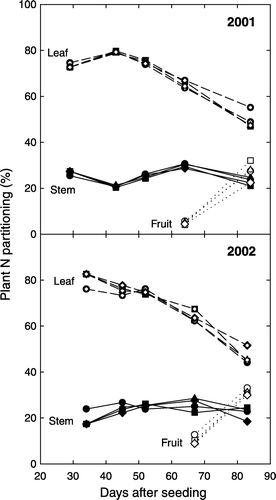Figures & data
Table I. Monthly accumulated heat units, total monthly precipitation, and long-term (1973–2000) means at the experimental site, Mississippi State, Mississippi in 2001 and 2002.
Figure 1. Temporal changes in cotton leaf photosynthetic rate during plant growth as affected by nitrogen fertilizer rates in 2001 and 2002. Data are means (±SD) of three replicates and five leaves in each replicate.
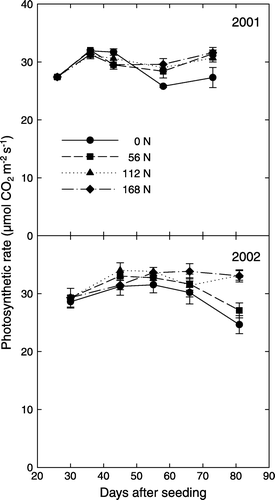
Table II. Above-ground biomass accumulation (kg ha−1) of cotton plants during squaring and fruiting as affected by the four N fertilizer treatments of 0, 56, 112, and 168 kg N ha−1 in 2001 and 2002. Each value is the mean of five (2001) or six (2002) replications.
Figure 2. Nitrogen concentrations of leaves (dashed lines), stems (solid lines), and fruits (dotted lines) during plant growth as affected by N-application-rate treatments of 0 N (circle), 56 N (square), 112 N (triangle), and 168 N (diamond).
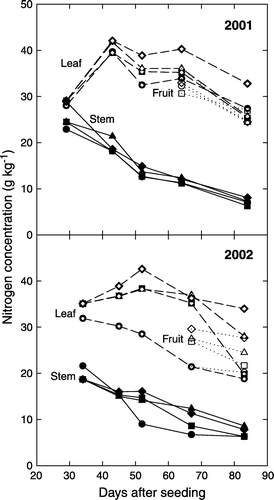
Figure 3. Accumulated nitrogen of leaves (dashed lines), stems (solid lines), and fruits (dotted lines) during plant growth as affected by N-rate treatments of 0 N (circle), 56 N (square), 112 N (triangle), and 168 N (diamond).
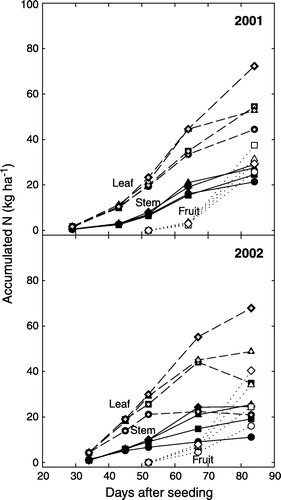
Figure 4. Relationships between (A) N concentration of above-ground plant tissues and ratio of canopy reflectance at 715 and 405 nm (R 715/R 405) and (B) accumulated N and reflectance ratio of R 795/R 755. Linear regression equations are based on data pooled across years, N treatments, and measuring dates (P<0.001, n=176).
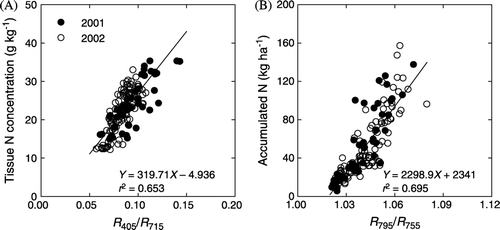
Figure 5. The percentage of N partitioning in leaves (dashed lines), stems (solid lines), and fruits (dotted lines) during plant growth as affected by N-application-rate treatments of 0 N (circle), 56 N (square), 112 N (triangle), and 168 N (diamond).
